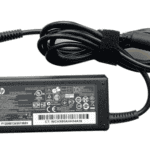As AMD continues to dominate the desktop CPU market with its Ryzen lineup, the next big question for builders and upgraders is: When is AM6 coming, and is it worth waiting for? The AM6 socket, while still under wraps officially, is increasingly becoming a focal point of speculation as the current AM5 platform matures. Based on AMD’s publicly shared roadmaps and credible leaks, we now have a clearer picture of what to expect—and when.
AM5 Still Has Life Left: Support Through 2027
Before diving into AM6, it’s important to note that AMD has pledged support for the AM5 platform through at least 2027. Much like AM4’s unexpectedly long six-year lifespan, AM5 is designed to provide stability and long-term upgrade paths. That means Zen 5 (“Granite Ridge”) and Zen 6 (“Morpheus”) CPUs will continue to use the AM5 socket.
This decision aligns with AMD’s customer-first strategy, giving users peace of mind that today’s high-end motherboards (like X670E or B650E) won’t become obsolete next year. It’s a smart move that not only protects investments but keeps AMD competitive against Intel’s more frequent platform changes.
When to Expect AM6: Likely 2028 With Zen 7
Based on current projections and AMD’s cadence of chip launches, the AM6 socket is expected to arrive around 2028, paired with the Zen 7 architecture. This next-generation socket is anticipated to usher in support for:
- DDR6 memory – next-gen RAM expected to bring faster speeds and greater bandwidth.
- PCIe Gen 6 – doubling throughput compared to PCIe 5.0.
- Potential new I/O standards – possibly USB4 v2.0 and enhanced storage protocols.
This transition would follow AMD’s tradition of major platform upgrades roughly every four to five years. AM6 will likely demand new motherboards, as these advancements require changes at the hardware level.
What’s Changing: A Shift in Architecture and Firmware
The move to AM6 might be more than just a socket change—it could signal a deep architectural overhaul. Key innovations expected include:
- Integration of CPU and GPU with shared GDDR7 memory – a possible step toward AMD’s vision of a unified processor design (especially for APUs and laptops).
- Replacement of AGESA firmware – AMD is working on openSIL (open-source silicon initialization library) to potentially replace AGESA, which could enhance boot performance, transparency, and stability for OEMs and power users.
If implemented, these would mark some of the biggest under-the-hood changes AMD has introduced in over a decade.
Should You Wait or Upgrade Now?
For users still running on AM4, the time to upgrade is now. The AM5 ecosystem has matured rapidly, with Ryzen 7000 and 9000 series chips offering significant gains in performance and efficiency—particularly the X3D models, like the Ryzen 7 7800X3D and Ryzen 9 9950X3D, which dominate gaming benchmarks.
AM5 boards now offer broad memory compatibility, better BIOS support, and increasingly competitive pricing. With AMD extending support for AM5 until at least 2027, a system built today is still highly relevant for the next 2–3 CPU generations.
However, if you’re already on AM5 and satisfied with performance, waiting for AM6 might make more sense—especially for those interested in bleeding-edge features like DDR6 and PCIe 6.0.
Final Thoughts
The AM6 socket is shaping up to be a revolutionary platform shift for AMD, not just an incremental update. With support for next-gen technologies and architectural changes on the horizon, it will likely define AMD’s roadmap well into the 2030s. But until it arrives—likely no earlier than 2028—AM5 remains a strong, future-proof platform for gamers, creators, and enthusiasts alike. Whether you’re upgrading or building new, AMD’s current offerings are well-positioned to carry you confidently into the next era.
Key Takeaways
- AMD will support the AM5 socket until at least 2026, with AM6 expected afterward alongside major tech upgrades.
- The upcoming Zen 6 architecture will still use AM5, giving current users more time before needing a motherboard upgrade.
- Current AMD and Intel offerings provide similar value, with X3D variants offering gaming advantages for those who don’t want to wait.
Overview of AMD AM6 Platform
The AMD AM6 platform represents the next generation of AMD’s socket technology for desktop processors. Based on current information, AMD plans to support the AM5 socket until at least 2026, with AM6 likely arriving in 2027 or 2028.
Key Features of AM6
AMD’s AM6 platform is expected to bring significant improvements over its predecessors. The socket will likely feature a completely new design to accommodate more powerful processors with higher core counts and improved power delivery systems.
Early predictions suggest AM6 might introduce unified processor architecture. This could potentially combine CPU and GPU functions into a single chip, reducing the need for separate components.
The platform may offer around 50% performance improvement over high-end AM4 systems. This jump would come from architectural enhancements and manufacturing process improvements.
PCIe 6.0 support is a likely addition, doubling bandwidth compared to PCIe 5.0 found in AM5 motherboards. This will benefit high-speed storage and next-gen graphics cards.
Enhanced AI acceleration capabilities will probably be a major focus, as AMD continues to compete with Intel in this growing market segment.
Supported AMD Ryzen CPUs
The AM6 platform will host a new generation of AMD Ryzen processors. These CPUs will likely be based on the “Zen 6” architecture or beyond, representing a major leap from previous Ryzen offerings.
The processor lineup may include:
- Entry-level 6-8 core models
- Mainstream 8-12 core options
- High-end 16+ core versions for enthusiasts and professionals
These CPUs will almost certainly feature improved IPC (Instructions Per Clock) performance compared to earlier Ryzen chips. Higher clock speeds are also expected, though actual numbers remain speculative at this point.
AMD may further enhance its 3D V-Cache technology, which adds additional L3 cache to boost gaming and application performance. Power efficiency improvements should also feature prominently in these new chips.
DDR5 Memory and Hardware Compatibility
The AM6 platform will fully embrace DDR5 memory technology, likely supporting higher speeds than current AM5 motherboards. Memory bandwidth could potentially exceed 8000MT/s as standard, compared to the 5200-6000MT/s common with early AM5 systems.
AMD EXPO™ technology will continue to evolve, offering enhanced memory overclocking profiles. This will make it easier for users to maximize memory performance without manual tuning.
Hardware compatibility will focus on future standards:
- USB4 or newer interfaces
- Thunderbolt support
- Enhanced display connectivity options
- Next-gen storage interfaces
The platform might not maintain backward compatibility with AM5 coolers, as thermal requirements and socket dimensions could change. However, AMD typically tries to preserve some compatibility between generations when possible.
Motherboards will feature improved VRM designs to handle the power requirements of new Ryzen CPUs, along with enhanced cooling solutions for better stability under load.
Roadmap, Availability, and Market Impact
AMD’s socket transition plans are becoming clearer as new architecture details emerge. The company continues to refine its product roadmap while balancing support for existing platforms with innovation needs.
AM6 and Next-Gen Architectures: Zen 5, Zen 6, Zen 7
AMD has confirmed development of multiple future architectures beyond its current offerings. Zen 5 will launch first, maintaining compatibility with the AM5 socket. The company recently added Zen 6 to its official roadmaps, with this architecture potentially marking a significant transition point.
According to leaked server documents, Zen 6 processors may require a new socket when they arrive in late 2025. This aligns with information suggesting AM6 could debut around this timeframe.
Some rumors indicate Zen 6 might be the final traditional Zen architecture before AMD pivots to a new design approach. The company has also confirmed work on Zen 7, though details remain limited about its socket requirements.
For consumers planning upgrades, this staggered release approach provides both opportunities and challenges when timing purchases.
Expectations for 2026 and CES Announcements
AMD previously stated they plan to support the AM5 socket until at least 2026. This timeline suggests AM6 would launch in late 2026 or early 2027, though recent leaks hint at a possible earlier transition.
Consumer platform updates typically follow server advancements by several months. If server Zen 6 chips arrive in late 2025, consumer AM6 motherboards might debut at CES 2026 or shortly after.
The company often uses CES to showcase next-generation technologies. Analysts expect AMD may provide the first official AM6 details at either CES 2026 or 2027, depending on development timelines.
AMD must balance supporting current AM5 customers with advancing new technologies. Socket transitions are significant investments for the company and consumers alike.
Global Availability and Retail Channels
When AM6 eventually launches, availability patterns will likely mirror previous socket transitions. Initial release will focus on enthusiast motherboards with mainstream and budget options following later.
North American and European markets typically see first waves of availability through established computer hardware retailers. Asian markets, particularly in Taiwan and China, often have earlier access through regional suppliers.
Online retailers like AliExpress frequently offer early access to new motherboards, sometimes before official global distribution networks are fully established. This can provide options for eager early adopters.
Supply constraints have affected previous AMD launches, particularly with cutting-edge technologies. Production capacity improvements may help avoid similar issues with AM6, but global semiconductor supply challenges remain unpredictable.
Frequently Asked Questions
AMD’s upcoming AM6 platform has sparked many questions among PC enthusiasts and potential buyers. Users want to know about release timing, technical specifications, and how it compares to current options.
What is the expected release date for the AMD AM6 platform?
The AMD AM6 platform is expected to release in late 2026 or early 2027. This timeline aligns with AMD’s typical socket refresh cycle of about 4-5 years.
Current information suggests that AMD will first release Zen6 architecture processors on the existing AM5 socket before transitioning to the new AM6 platform.
The company has not yet made any official announcements about AM6’s exact launch date.
How does the AMD AM6 platform compare to its predecessor, AM5?
The AM6 platform will likely offer significant improvements over AM5 in terms of power delivery, memory support, and I/O capabilities.
AM5 introduced PCIe 5.0 support and DDR5 memory, while AM6 is expected to advance these technologies further with potential PCIe 6.0 support.
Though specific details remain unconfirmed, the socket design will almost certainly change, making AM6 processors incompatible with AM5 motherboards.
Can you outline the AMD AM6 platform’s roadmap and anticipated advancements?
AMD’s roadmap points to AM6 supporting next-generation Zen7 or Zen8 architecture processors. These will likely offer improved IPC (Instructions Per Clock) performance and greater power efficiency.
The platform may introduce support for faster memory standards beyond current DDR5 capabilities. Enhanced AI acceleration features are also expected to be integrated.
Increased core counts and better multi-threading performance will likely be key selling points for the new platform.
When is the Ryzen series expected to adopt the AM6 socket?
The Ryzen series will likely adopt the AM6 socket with the launch of the Ryzen 9000 or 10000 series processors. This transition is expected to happen around late 2026 or 2027.
Before AM6 launches, AMD is expected to release at least one more generation of Ryzen processors on the AM5 socket.
The current Ryzen 7000 and upcoming 8000 and possibly 9000 series will remain on AM5 before the shift to AM6 occurs.
Which motherboard options will be available for the AM6 socket?
AM6 motherboards will likely follow AMD’s established naming convention with X870, B850, and A820 chipsets (or similar designations).
Major manufacturers like ASUS, MSI, Gigabyte, and ASRock will probably release various models across different price points and feature sets.
These boards will incorporate the latest connectivity standards, including USB4, faster Ethernet, and potentially new storage interface options.
How does the AM6 platform integrate with the overall AMD processor generational timeline?
The AM6 platform represents the next major socket transition in AMD’s processor timeline, following AM4 (2016-2022) and AM5 (2022-2026/27).
This platform will likely support multiple generations of Ryzen processors, continuing AMD’s commitment to socket longevity.
AM6’s introduction will coincide with significant microarchitecture advancements, possibly marking the beginning of a new approach to CPU design for AMD.







